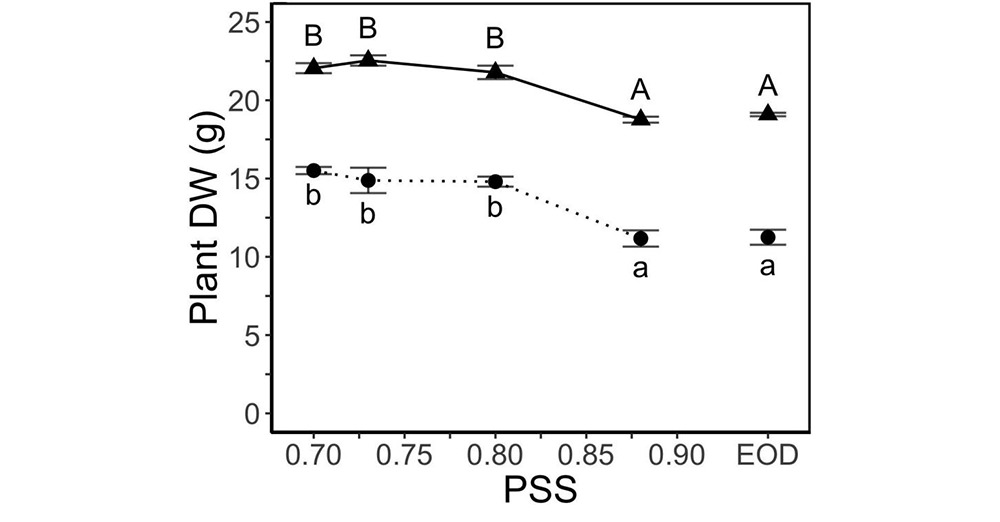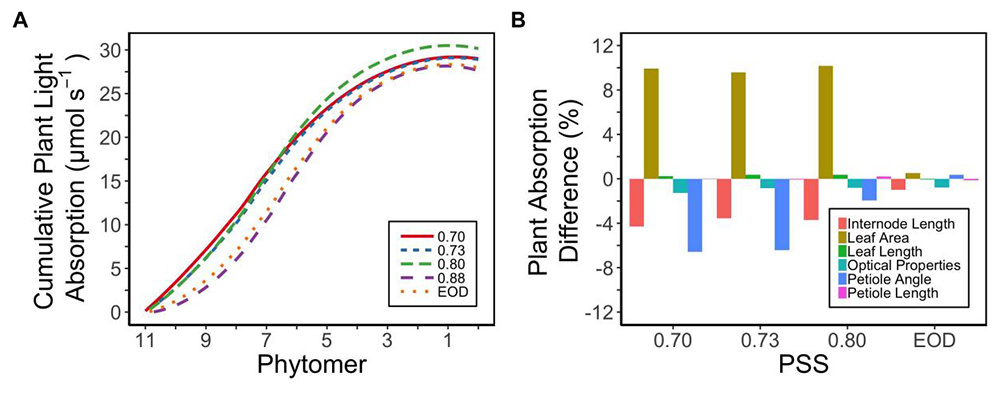Adding Far-Red Light Can Result in Increased Tomato Plant Growth and Fruit Production
Adding far-red light, which are photons with wavelengths from 700-750 nanometers (nm), can increase the photosynthetic rate as plants now utilize light more efficiently to produce carbohydrates.
We tested white LEDs that contain 2-8 percent far-red light and found there was an increase in the photosynthetic rate and efficiency compared to red/blue LEDs, which do not contain any far-red.
Impact of far-red light on photosynthesis
Far-red light can cause stems to elongate and leaves to expand,Far-red light also has some effect on flower regulation;Overall, there really isn't much photosynthetic activity occurring by far-red light alone. There is a big decrease in photosynthetic activity when the light goes above 700 nanometers, which is the far-red light region. But the photosynthetic rate is boosted when red, blue and far-red light are combined.Far-red, blue and red light have a synergistic effect
Plants that normally grow in unshaded or lightly shaded habitats can distinguish differences in the proximity of other plants through alterations in the spectral intensity of light; These plants can detect such differences by the ratio of red to far-red light (R:FR), which is detected by a family of plant photoreceptors, the phytochromes
Shading by sunlit leaves causes a low red (R) to far-red (FR) ratio that results in a low phytochrome stationary state (PSS). A low PSS induces an array of shade avoidance responses that influence plant architecture and development. Cause this architectural response is advantageous for plant growth due to its positive effect on light interception. In contrast to sunlight, artificial light sources such as LEDs often lack FR, resulting in a PSS value higher than solar light (∼0.70). The aim of this study was to investigate how PSS values higher than solar radiation influence the growth and development of tomato plants.Tomato plants were grown at four PSS levels (0.70, 0.73, 0.80, and 0.88), or with a 15-min end-of-day far-red (EOD-FR) application (PSS 0.10).Photosynthetic Active Radiation (PAR; 150 μmol m²) was supplied using red and blue (95/5%) LEDs. Increasing PSS above solar PSS resulted in increased plant height.Leaf area and plant dry mass were lower in the treatments completely lacking FR than treatments with FR.EOD-FR-treated plants responded almost similarly to plants grown without FR, except for plant height, which was increased.Increased petiole angle and internode length had a negative influence on total light absorption. Additionally he treatments without FR and the EOD-FR showed strongly reduced fruit production due to reduced fruit growth associated with reduced source strength and delayed flowering.We conclude that growing tomato plants under artificial light without FR during the light period causes a range of inverse shade avoidance responses, which result in reduced plant source strength and reduced fruit production, which cannot be compensated by a simple EOD-FR treatment.
A low R:FR ratio leads to a low PSS, and results in a series of shade avoidance syndrome (SAS) responses.Low R:FR induced SAS responses occur at a plant level and influence the whole plant morphology, including increased stem length and assimilate partitioning toward the stem A low R:FR increases apical dominance and reduces basal branching At the leaf level, a low R:FR increases petiole and leaf length, decreases the leaf mass per leaf area (LMA), and reduces both the leaf chlorophyll content and the chlorophyll a :b ratio; A low R:FR also affects plant development by reducing the time to flowering in Arabidopsis thaliana , resulting in earlier seed production; As R:FR affects plant architecture it also changes the total light absorption by the plant, as well as the distribution of absorbed light over the whole plant.
Alongside its impacts on plant morphology and development, FR may also affect the photosynthetic performance of the leaf. Due to the Emerson enhancement effect, the combination of R and FR light may result in a higher photosynthetic rate compared to applying both wavelengths independently
Light-emitting diodes (LEDs) are increasingly used in greenhouses, vertical farming and growth cabinets, with or without natural daylight LEDs are characterized by relatively narrow-band spectra that does not resemble natural daylight, which is continuous in the PAR region (400–700 nm). Additionally, the LEDs used in modern horticulture emit minimal to zero light in the region of FR (710–850 nm), resulting in R:FR ratios that are higher than those of natural daylight.
Plant DW clearly increased with decreasing PSS (increasing FR)

This increase in plant DW was mainly related to differences in light absorption, which in turn were mainly due to differences in total leaf area rather than changes in other morphological and phototropic parameters (petiole, leaf and internode length, petiole angle, optical properties) ---

The increasing leaf area with decreasing PSS at above-sunlight R:FR ratios is in contrast with the often-observed inhibitory effect of increasing FR on resource allocation to leaves, while favoring the stem. This is often mentioned as a shade avoidance syndrome hallmark. Additionally, it is important to consider that among various dicotyledonous species, decreases in R:FR ratio can cause both inhibition and stimulation of leaf expansion
Increasing the R:FR ratio of artificial LED light above the R:FR ratio value for sun light negatively influences the growth and early fruit production of young tomato plants. The observed reductions in plant dry mass due to a lack of FR were mainly related to reductions in whole plant light absorption, which in turn were largely due to reductions in total leaf area. In contrast to the decreased leaf area, the changes in petiole angle and decreased internode length did not negatively influence whole plant light interception in these experiments. Finally, FR increased fruit yield, which correlated well with the accelerated flowering and overall increase in plant source strength under FR light. We conclude that growing tomato plants under artificial light without FR during the light period causes a range of inverse shade avoidance responses, which result in reduced plant source strength and reduced fruit production that cannot be compensated for by a simple EOD-FR treatment. Consequently, in greenhouse horticulture where often RB LEDs are used without additional FR, the addition of FR can result in increased plant growth and fruit production.

